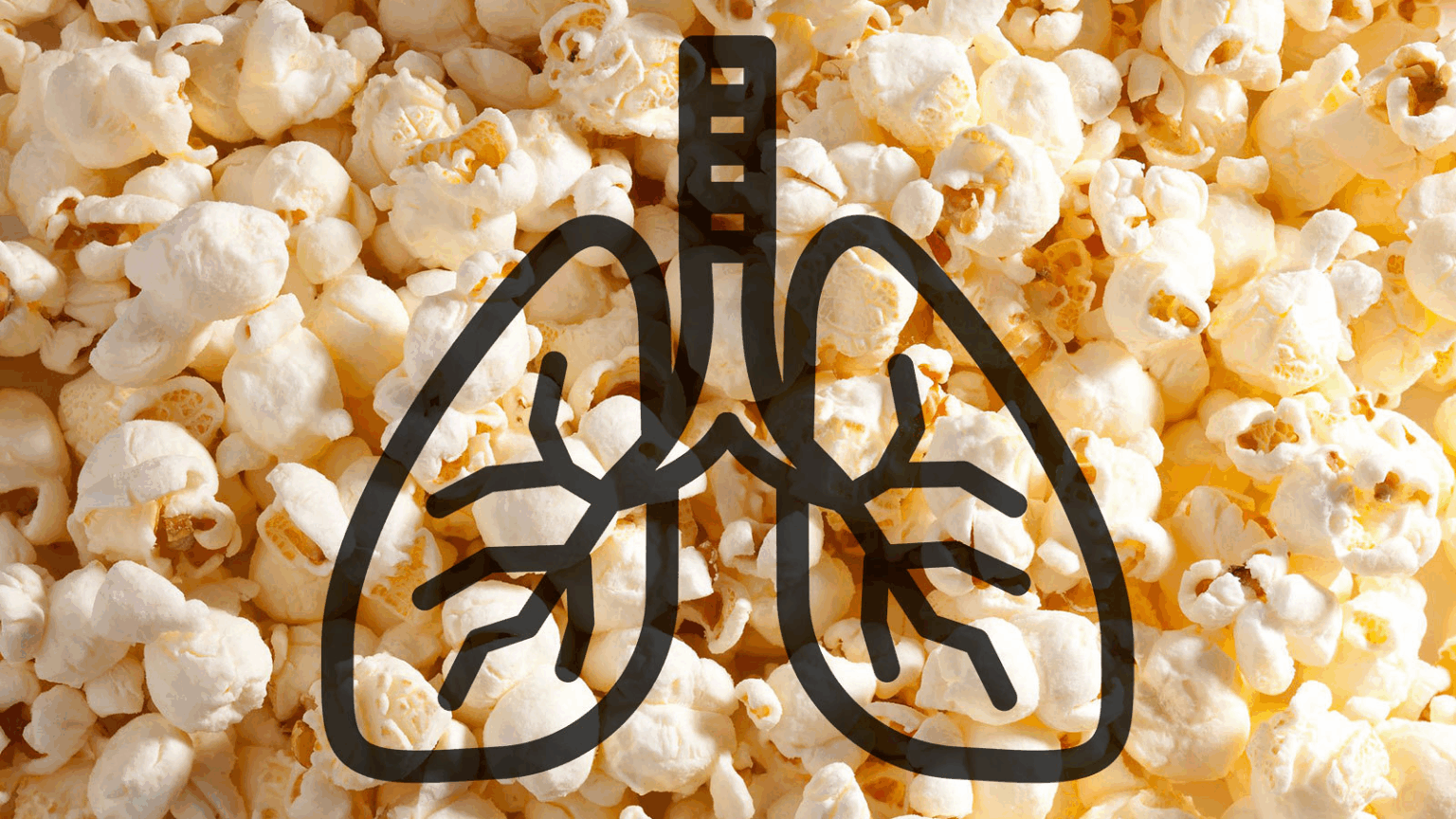Young people are being warned about a serious and irreversible condition known as “popcorn lung,” or bronchiolitis obliterans—a rare but devastating lung disease that can make breathing increasingly difficult over time. This condition, often linked to vaping and e-cigarettes, is caused by exposure to harmful chemicals such as diacetyl, a flavoring compound once commonly used to give foods a buttery taste.
According to Donal O’Shea, a chemistry professor at RCSI University of Medicine and Health Sciences, the term “popcorn lung” first emerged around the year 2000 when several workers at a microwave popcorn factory developed severe respiratory problems. The factory had used diacetyl in its flavoring process, and the employees who inhaled it experienced lasting lung damage. This discovery shed light on the dangers of inhaling certain artificial flavoring agents that were never meant to enter the lungs.

Just like the workers in that popcorn factory, people who use flavored vapes may also be inhaling diacetyl without realizing it. When vaporized and inhaled, diacetyl transforms into a toxic substance that can scar and inflame the bronchioles—the tiniest air passages in the lungs. Over time, this scarring makes it harder for air to move through, leading to symptoms that can resemble severe asthma or chronic bronchitis.
“There’s no cure for popcorn lung,” O’Shea explains. “Once the lungs are damaged, treatment is limited to managing symptoms.” Medical approaches may include the use of bronchodilators to relax the airways, steroids to reduce inflammation, or, in extreme cases, a lung transplant. Because of the irreversible nature of the disease, prevention remains the best and only true defense.
What Causes Popcorn Lung?
The main culprit behind popcorn lung is diacetyl, but the illness can also result from inhaling other toxic chemicals or from certain infections that cause inflammation in the lungs. In the early 2000s, workers at popcorn manufacturing plants who inhaled diacetyl dust suffered from permanent, debilitating lung damage. Even though diacetyl has since been banned in e-cigarettes across the UK and the European Union, it still appears in illegal and unregulated vape products.
In the United States and several other countries, diacetyl continues to be used in some flavored vaping liquids and food products. According to Cancer Research UK, other causes of popcorn lung include inhaling pollutants, exposure to industrial fumes, or lung infections that damage the bronchioles.
Is There a Connection Between Vaping and Popcorn Lung?
Although there isn’t yet definitive evidence directly linking vaping to popcorn lung, scientists remain deeply concerned about the potential risks. One of the biggest challenges is that vaping is still a relatively new habit, and long-term studies are limited. However, researchers already know that certain vape liquids contain substances like diacetyl or acetyl propionyl—both known to cause lung irritation when inhaled.
The rise of vaping, especially among young people, adds to the concern. The Office for National Statistics reports that in the UK, more adults over the age of 16 now use vapes or e-cigarettes than smoke traditional cigarettes. Among them, individuals aged 25 to 49 are the most frequent users.
In the United States, vaping has become even more widespread among teenagers. According to a 2024 report from the Centers for Disease Control and Prevention (CDC), e-cigarettes were the most commonly used tobacco product among middle and high school students. About 43.6% of those who had ever tried e-cigarettes reported that they currently used them.
The American Lung Association has labeled popcorn lung as “a dangerous risk of flavored e-cigarettes,” even though no direct link has yet been scientifically proven. What’s clear, however, is that inhaling chemical flavorings intended for food can have serious, unintended consequences when introduced into the lungs.
Recognizing the Symptoms of Popcorn Lung
Popcorn lung develops gradually and can be difficult to diagnose in its early stages. According to WebMD, symptoms usually appear within two weeks to two months after exposure to toxic fumes or after a severe respiratory infection. The main warning signs include a persistent, dry cough and shortness of breath—especially during exercise or physical exertion.
As the condition progresses, people may start wheezing even if they don’t have asthma or a cold. Fatigue for no clear reason is also common, as the body struggles to get enough oxygen. Some individuals may experience low-grade fever, night sweats, or skin rashes. However, others may not notice any symptoms until the disease has already caused significant lung damage.
The Cleveland Clinic emphasizes that early detection is crucial, but because the disease is irreversible, the focus should always be on prevention. Avoiding exposure to harmful chemicals like diacetyl and limiting or eliminating vape use are key steps toward protecting lung health.
Why Prevention Is the Best Protection
Popcorn lung cannot be cured, and the damage it causes to the lungs is permanent. Once scar tissue forms in the bronchioles, no treatment can reverse it. For that reason, medical professionals stress the importance of prevention—especially among young people who might be drawn to vaping because of its fruity or sweet flavors.
Many vape products are marketed in ways that appeal to teenagers, masking the potential risks with attractive packaging and flavor names like “bubblegum,” “cotton candy,” or “mango ice.” Yet behind these appealing labels can lie dangerous chemicals that threaten long-term respiratory health.
Experts urge people to think critically about what they inhale. Even though vaping is often promoted as a “safer” alternative to smoking, the truth is that it still exposes users to harmful chemicals that can permanently damage the lungs. Until more is known about the long-term effects of vaping, the safest choice is to avoid it altogether.
In the end, “popcorn lung” serves as a powerful reminder that our lungs are delicate organs designed for clean air—not for processing chemicals meant for flavor or aroma. Protecting them should always be a top priority.





